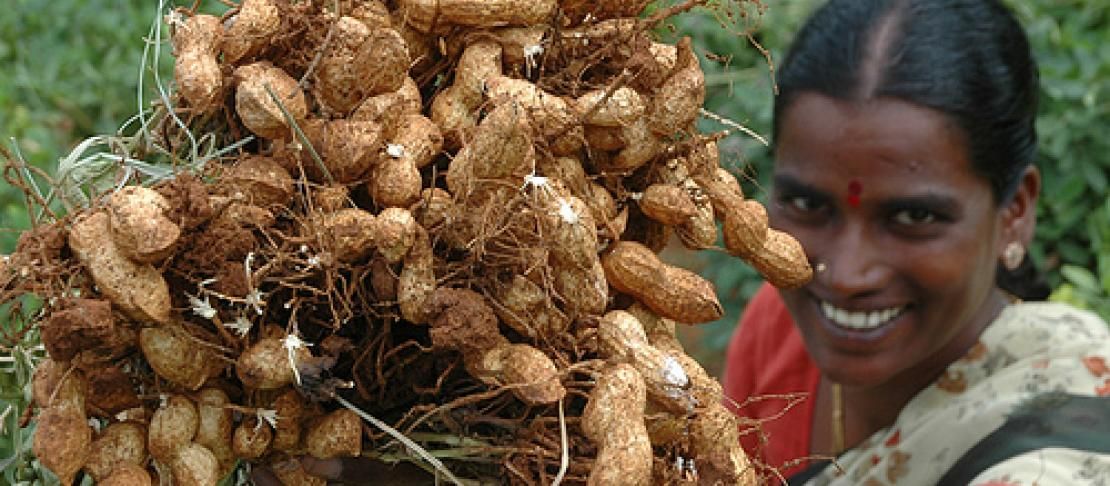If understood properly, crop insurance a viable solution for farmers

Tamil Nadu is a state in Southern India that sets itself apart from other agriculture-dependent regions, as it has historically performed rather well when it comes to agricultural production. One reason is that here, farmers are relatively more responsive and receptive to changing technologies and market forces.
To learn more about these farmers' adaptability to new technologies and potential experiences with crop insurance, especially from community-based crop insurance structures, researchers ventured out into Vellore, a Tamil Nadu district. The objective was to find out if climate insurance schemes could be a viable instrument to help farmers manage ongoing weather related risks, and how it has been used up to now in this area via community-based insurance activities.
The initial findings from the field study show that even if insurance schemes could be a solution to decrease vulnerability and ensure income stability, farmers’ awareness of the product and its functions need to be strengthened in order to make sure it is used efficiently.
The main partners of this project are the CGIAR Research Program on Climate Change, Agriculture and Food Security (CCAFS) South Asia regional program and International Food Policy Research Institute (IFPRI) and the DHAN Foundation, who together organised the field trip.
Risks meet solutions
Farmers in Tamil Nadu face several obstacles in their daily lives, where weather related risks are a key concern. This include rainfall deficits, dry spells and late onset of rainfall, which all increase the vulnerability of smallholder farmers. Excessive rainfall with crop losses as a result is also a serious problem for farmers.
Since Vellore is a drought prone district, groundwater has been over-exploited through open wells and deep bore holes, which is an additional threat to farmers who cultivate groundnuts. Groundnut is mainly a rain-fed crop, which makes groundnut farmers very vulnerable to changing weather conditions and water stresses.
The field-visit consisted of focus groups discussions, which involved a total of 300 insured and non-insured farmers. The discussions focused on the major risks farmers face for crop production and the coping strategies they apply.
Insured farmers had been involved with a community-based crop insurance model.
This insurance scheme, where the community is both the insurer and the insured, was launched in Vellore district a few years back by DHAN Foundation. Participating members were already organised in self-help groups and together with DHAN staff, representatives of the groups formed an assessment committee. This committee visits every farm individually to measure the groundnut yield and to determine whether or not claim payment is necessary.
Key here is that the farmers are involved in the assessment process, and changes to the insurance product are made in consultation with the community.
Learn more: Piloting Mutual Crop Income Insurance with Small Rainfed Farmers, by DHAN Foundation Teamleader
Results and thoughts from the field study
Although community meetings were held on the explanation of crop insurance, some farmers did not attend these meetings or assumed that the premium they pay will be returned if no damage occurs. In relation to this, some farmers also mentioned that they were insured in previous years, but discontinued with the insurance as they did not receive a claim payment.
A statement that was frequently mentioned by non-insured farmers was: "insurance is a gamble!"
Often, these perceptions can be linked to a lack of awareness on how an insurance product actually works, as the insurance is designed to trigger a claim payment in case of crop failure, and thus ensuring income stability in the long run.
To gain insight in the coping strategies farmers apply for these risks, farmers were asked to make a choice between insurance, savings bank account, drought resistant seeds, and fertilizer. Here, fertilizers were discarded as an efficient risk mitigating strategy, as farmers stated that fertilizers dry out the crop even further in case of deficit rainfall.
Farmers who perceived insurance as a gamble would also opt for savings bank account for their first choice, as this was considered the safest and most predictable option for them.
Progressive farmers, often the ones with more knowledge of the insurance product, would opt for insurance and drought resistant seeds in case of deficit rainfall.
This field visit confirmed that crop insurance can be a very useful instrument to guard farmers against weather variability. However, to make this type of insurance more effective, awareness among farmers needs to be raised to increase understanding of the insurance product.
Watch how we have been working with crop insurance in Vaishali, India
Our work on crop insurance is part of a larger project, namely the implementation of "Climate smart villages" across South Asia. Learn more.
Hilde Zevenbergen is a graduate student in University of Utrecht, Netherlands and is currently working as an intern at our South Asia Regional Program Office. Edited by Cecilia Schubert, Communications Assistant. Learn more about our activities by following us on Twitter @Cgiarclimate and Facebook.



